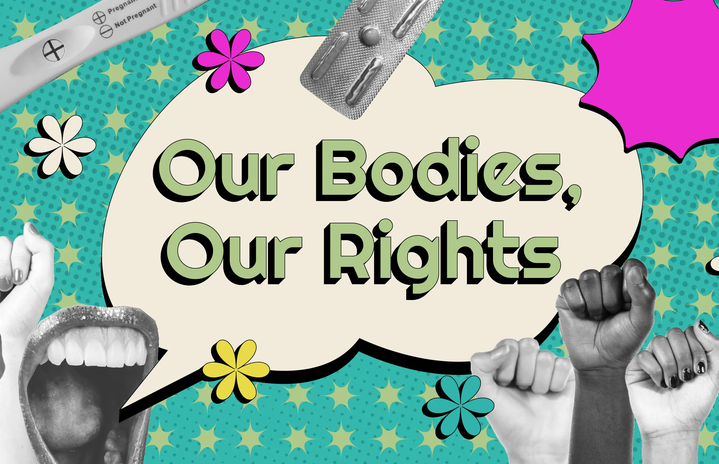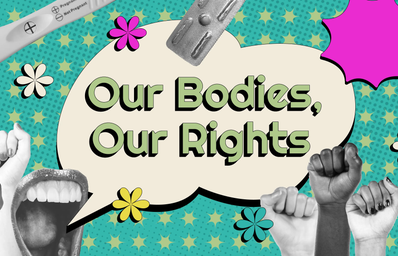Film is one of the most powerful forms of artistic expression. While it largely serves as a form of entertainment, it also has the ability to educate viewers, reach international borders, and offer audiences a perspective they may not see in their own lives.
This is especially true for Nazrin Choudhury’s Academy Award-nominated live-action short film, Red, White and Blue.
The film follows Rachel (Brittany Snow), a single mother raising two children, Maddy (Juliet Donenfeld) and Jake (Redding Munsell), in the state of Arkansas. As the family lives paycheck to paycheck, with Rachel bussing tables at a local dinner, their financial situation is tight. When Rachel suddenly finds herself requiring a necessary abortion, she must travel to Illinois to obtain the procedure. However, her living circumstances and limited access to resources prove that this will be an uphill battle for the young mother in need.
On Oct. 30, the University of Pennsylvania (Penn) Carey Law School hosted a live, student-run screening of Red, White and Blue with a Q&A discussion about reproductive and economic justice that took place after the screening.
Moderated by LaTosha Brown (co-founder of Black Voters Matter), the discussion’s participants consisted of the film’s writer, director, and producer Nazrin Choudhury, professors Melissa Murray of New York University and Kate Shaw of Penn (co-hosts of the podcast Strict Scrutiny), Katia Pérez (interim executive director at Abortion Liberation Fund of PA), Madeleine Morales (Penn law student), and more. This event was live-streamed across the nation for any schools and viewers who wished to participate.
Choudhury jumpstarts the post-screening discussion with an explanation as to why she made this film.
“I really wrote it for them [Choudhury’s daughters] because there is a certain point at which this will no longer be my issue,” said Choudhury. “But that doesn’t mean that I don’t fight for them like our grandmothers and mothers fought for us.”
Choudhury mentioned wanting to utilize cinematic storytelling in a “show, don’t tell” fashion to touch upon the empathy of the film’s viewers.
Shaw applauds this use for filmmaking, stating it was “incredibly illuminating to me to see how someone with a different toolkit than law approaches the project of trying to communicate stakes and reach people who might be doubting or might just not have really thought much about what it means to live in the post-Dobbs landscape.”
Pérez further emphasizes this point by explaining the financial strain that many women face who call into the Abortion Fund. She points out how well the film mirrored this very real struggle that often goes unseen when putting together resources to access basic reproductive healthcare.
“I’ll say specifically the scene where the mom is at the kitchen table counting dollars and cents, I am positive that every single person before they call us are also counting every single dollar and cents to see how much they have towards the cost of the procedure,” Pérez said.
While some individuals can easily access resources such as private healthcare or funds for out-of-state care, Pérez explains that this is not the reality for everyone.
“A lot of people that call us are under different intersecting categories of marginalization, either experiencing intimate partner violence or a single mom with children experiencing poverty or experiencing housing instability,” she said.
Pérez also warns against viewing states such as Pennsylvania as a “safe haven” for abortion access. She explains that many women across the United States, specifically those in Florida, travel to Pennsylvania to receive an abortion because it is one of the closest options to obtain the procedure.
This can quickly become an overwhelming amount of work for clinics to handle and slows down the process of Pennsylvanian residents accessing abortion procedures. Additionally, this depletes the funds of organizations such as the Abortion Liberation Fund.
Morales also supports Pérez’s point by emphasizing the dangers of judicial bypass, a legal decision in which a judge grants a minor permission for a doctor to perform an abortion without parental consent.
“Judicial bypass is a huge issue in Pennsylvania, in which people anticipate Pennsylvania being this safe haven state and all the abortion clinics become very overwhelmed with all of the work they have to do,” says Morales.
She also says that these legal proceedings can be harmful for youth to endure due to the stigmatization that surrounds minors receiving these procedures. “There’s already the assumption that there’s a certain type of person [seeking an abortion] when in reality they’re actually just a child seeking healthcare,” Morales continues.
Murray sheds light on another legal aspect of reproductive rights in the United States that is especially important to consider during the current presidential election. The Comstock Act of 1873 is a dormant law that is still in the legislature and could be revived at any point. This law forbids the distribution of medication abortion through any form of mail service, and “all you need is the Department of Justice and Attorney General willing to enforce it,” says Murray. If reinforced, this ban also includes medical instruments and tools needed to perform abortion procedures from being sent to physicians and clinics across the country.
Murray explained how Red, White and Blue challenge viewers to reflect upon their internal biases in regard to reproductive rights. As the plot progresses, “you’re forced to reckon with all of the preconceived ideas you had about Rachel, the mother,” she said.
The film puts into perspective the large number of factors that must be considered when analyzing the need for equal access to reproductive healthcare and the resources that can be created to aid women across the country. “These are reproductive justice questions,” said Murray.
As the discussion comes to an end, Morales circles back to Choudhury’s insights to highlight an important takeaway for the audience members and livestream viewers: the need to challenge our daily biases about reproductive healthcare and rights, just as the film forces its audience to do.
“Get comfortable with being uncomfortable,” said Morales. “Life is all about actionable things we do to manifestly change the circumstances in which we live.”
Choudhury closed out the discussion about the important dialogue her film creates and aims to amplify it by encouraging everyone to see it.
“Watch this film because it was made for all of you, the people whose story this is for,” says Choudhury. “Whatever reason they may need it, for the people who are doing the work on the ground, for people like you, Madeleine, to be able to utilize this,” she said.
The film is now available for free streaming on YouTube.
Emma Kopp, Vice President of the University of Pennsylvania Carey Law School Council of Student Representatives, shares the weight of the impact this film and topic has, especially for the young and upcoming generations.
“I think this is a really interesting time for a lot of young women and girls to be coming of age having fewer reproductive rights than our mothers did and our grandmothers and that’s really shocking,” she said.
Bestie, do you *actually* know how to vote? We’ve got everything you need to make sure you’re fully prepared for Nov. 5. Visit HowToActuallyVote.com for a step-by-step guide to making your voting plan.
For more election-related content, check out Her Campus’s 2024 Election hub. Want to learn about your local ballot? Input your address into BallotReady’s tool below the glossary for more personalized voting resources. Tag @hercampus and use #HowToActuallyVote to be featured on Her Campus.



